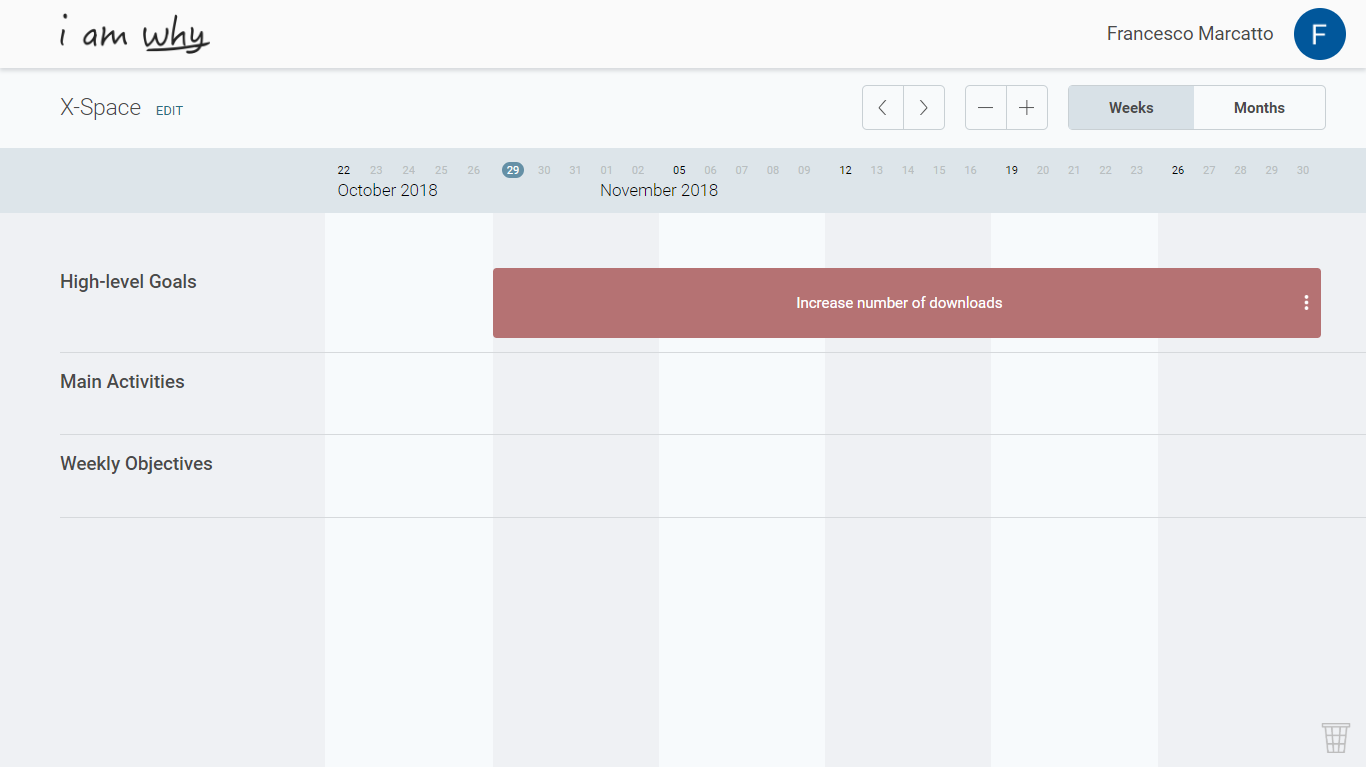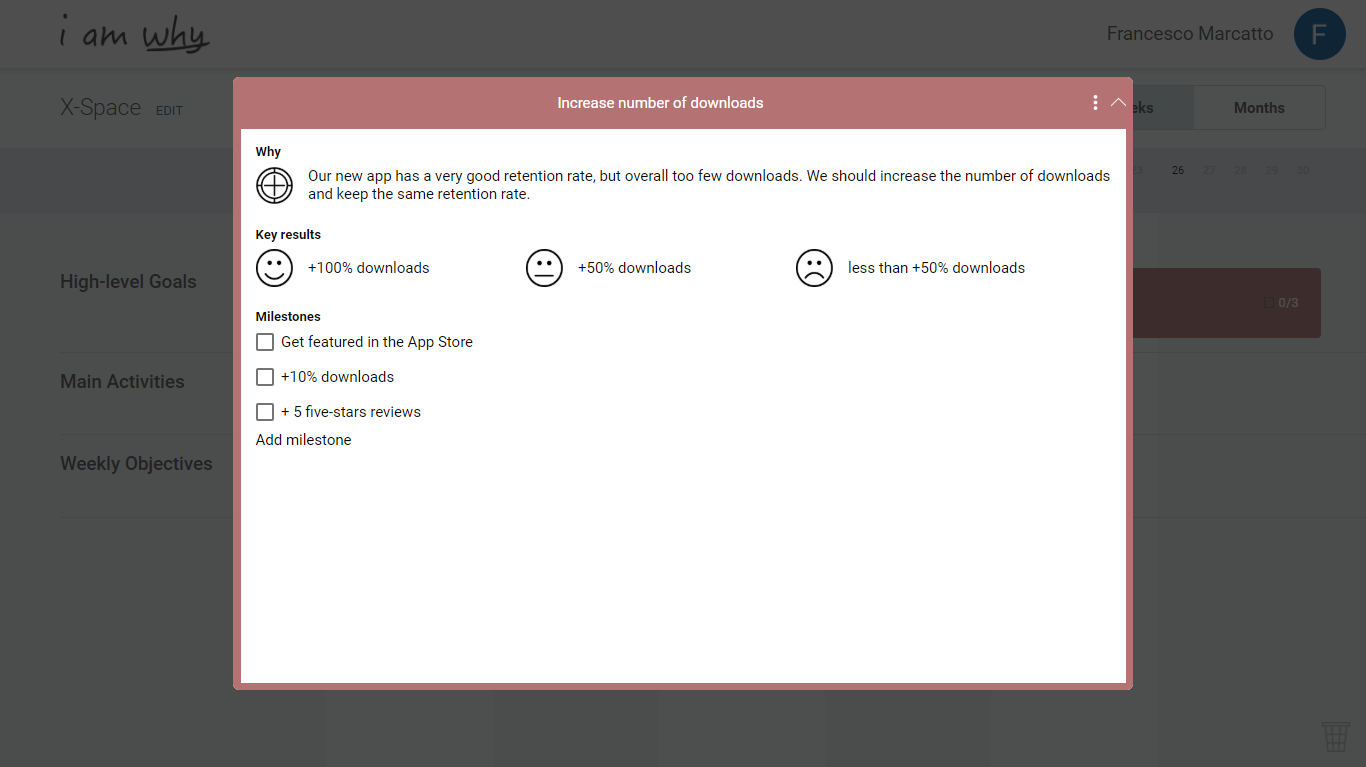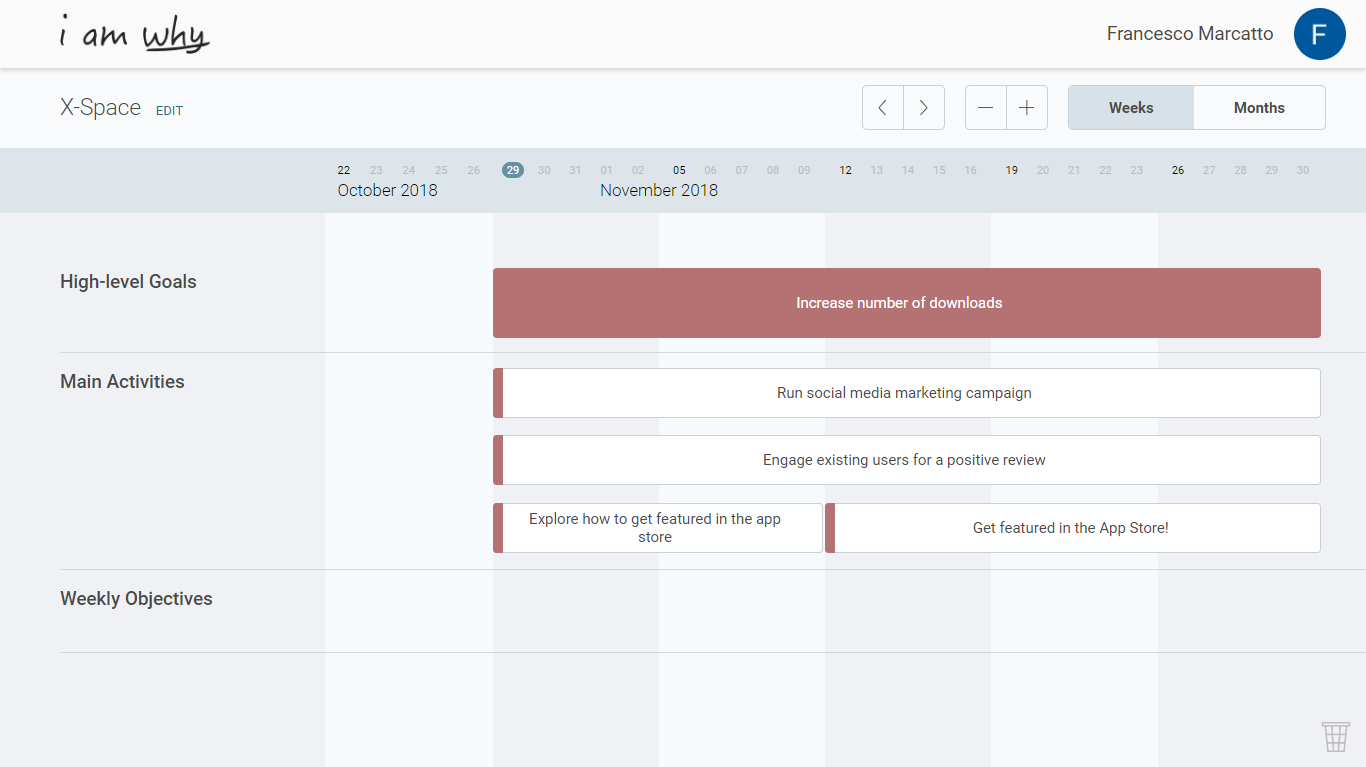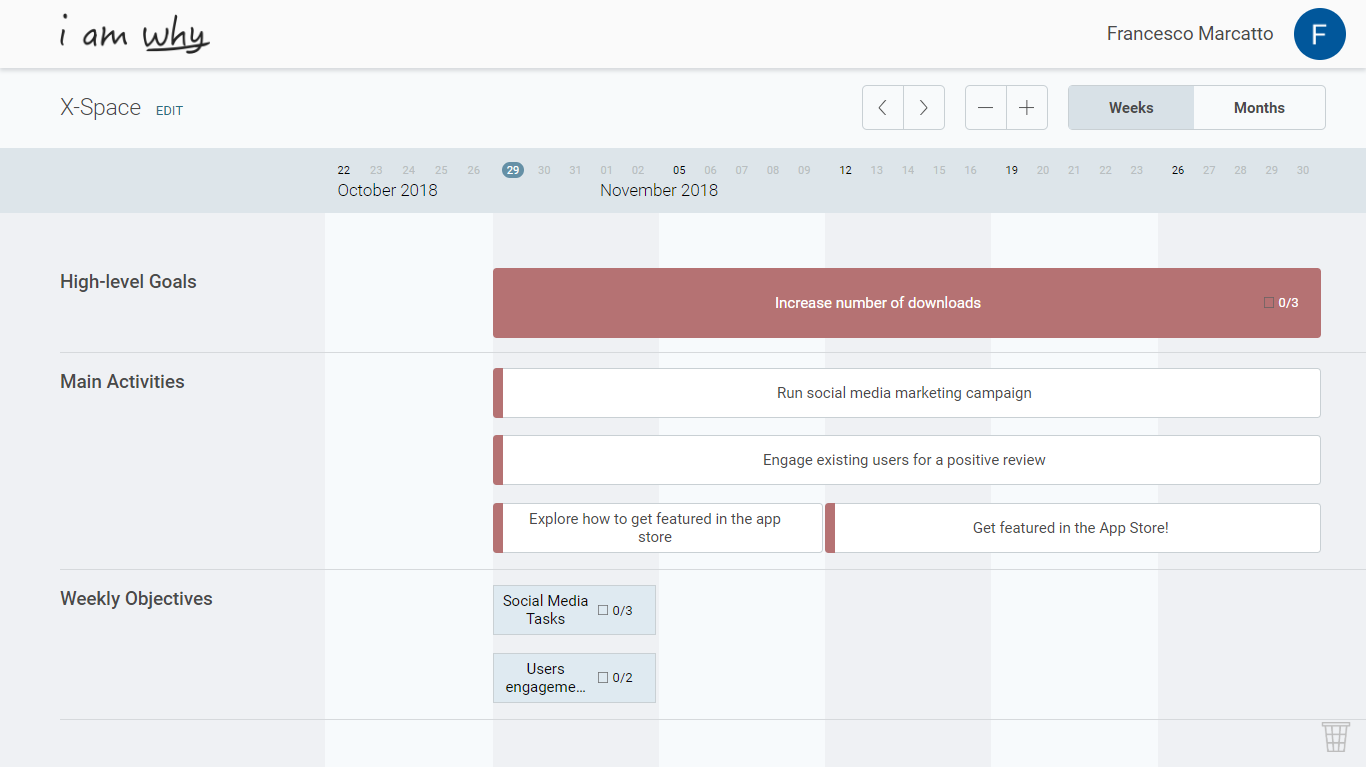
How to implement Management By Objectives for improving organisational performance in your company
Francesco Marcatto30 Oct 18
Objectives and Key Results, or simply OKRs, is a management framework which has become extremely popular during the past years. This approach, however, has been first introduced in the 1980s, and it is basically a narrowed and more agile version of Management By Objectives (MBO), a smart management framework made popular by management superstar Peter Drucker about thirty years before.
Even if the OKRs approach makes total sense, I firmly believe that it’s worth having a look at its old parent, because it can still teach a lesson or two in team management and organisational productivity.
MBO: the what and the why, in 5 steps
A smart manager recognises that work is not a mere sequence of tasks, but it’s a coordinated sequence of actions aimed at reaching organisational goals. Therefore, if you want to improve productivity and employees engagement, start by setting clear and shared objectives. Giving people a purpose and a goal increases motivation and empowerment, and, as every social scientist know, working towards common goals reinforces a positive work environment.
Management By Objectives can be implemented in 5 simple steps:
-
Determine organisational objectives. Start by reviewing the strategic objectives of your company: what’s important to achieve next? What’s your next big step in your strategic plan? And if you don’t have a strategic plan for the future, well, it’s time to create it before digging deep into the next steps!
-
Define employee or team-level objectives. Once you know what the next big steps of your organisation are, it’s time to translate them to the employee level. For each employee or small team, define a clear objective. It’s strongly suggested to adopt a participative approach: discuss with your employees the organisational objectives and let them participate in creating their objectives, this way you’ll increase their involvement and commitment. Don’t just assign objectives, make also sure that everyone knows how to reach them.
-
Make the objectives SMART. An objective doesn’t mean anything unless it’s clearly recognisable and measurable. A well-crafted objective follows the S.M.A.R.T. acronym, this means that it is Specific, Measurable, Acceptable, Realistic, and Time-Bound (here’s an article about smart goal-setting). Or if you want a more modern approach, the OKRs framework is an extremely valid alternative for developing smart objectives.
-
Monitor progress and provide feedback. This is why in MBO there is so much emphasis on creating measurable objectives, so you can track progress with ease. The purpose of continuous monitoring is to discover problems and blocks early, so you can overcome them before it’s too late. If you perceive that things are not going as expected, go and talk with your people. See what’s going wrong, be kind and offer help, this is what a smart manager should do.
-
Evaluate and reward progress. After the deadline has expired, it’s time to review the achievement. Remember to reward employees or teams who reached their established objectives. Rewards don’t need to be monetary only, a strong force of motivation is the need to feel appreciated, so tell your employees that they did a great job and that their efforts have been very useful for the whole company. And if they failed to reach the objectives, don’t get mad and shout at them, they’ll be as sorry as you are, but provide honest feedback so they can perform better next time.
MBO: What NOT to do
In some companies, objectives have a bad reputation. If you ever had the ‘pleasure’ to work with a manager who screams at you ‘Hit your targets, I don’t care how you’ll do it, sell your soul to the devil if needed, but hit those damn numbers’, you know what I mean. For some (foolish) managers, MBO and OKRs are just about numbers. To make things worse, they don’t tell you how to reach those -usually practically unachievable- numbers and why they’re so important. And the reward is money for them or their upper managers, while for you the reward is keeping your job. If you think I’m being too harsh or pessimistic here, have a look at Ted Bauer’s The context of things, an honest and disenchanted blog about modern work environments.
True, the idea of goal setting can be misused. But don’t put the blame on MBO or OKRs. Numbers are an important part of MBO, but the main focus of this process is on the psychological factors that will improve teamwork and motivation: clarity, sense of purpose, gratification, empowerment, encouragement.
If you don’t believe it, take a look again at the 5 steps for implementing MBO, it’s mostly about being good human beings at work: set clear objectives, use a participative approach, discuss goals with your employees, the objectives should be acceptable and realistic, be kind and offer help, provide rewards and honest feedback.
Anyone can set numbers, but only empathic smart managers can be great team leaders.
I am Why: A tool for implementing MBO in your company - Video Tutorial
It’s time to put theory into practice. You can easily implement Management By Objectives in your company with I am Why, an online visual project management and roadmapping tool.
To watch the video tutorial, just click here.
The main view is organised as a horizontal timeline with three separate layers where you can put down your objectives. The top layer, called High-level goals, is where you write down the organisational objectives. The second one, Main Activities, is for teams or employees objectives. The last one, Weekly tasks, can be used to break down each employee objective into smaller chunks, so they have clear smaller steps for reaching their goals.
How to use I am Why for MBO
Let’s say that your company has developed a great app, users are happy with it but the number of downloads is still unsatisfactory, so it’s time to do something.
The organisational objective
First, click on an empty space in the High-level goals section to create a new bar, we'll call it ‘Increase number of downloads’. Then drag the borders to adjust the starting date (usually today) and the deadline (remember that unrealistic deadlines kill motivation, so don’t be too strict!). This way you have created a new organisational objective.

Make the objective SMART
Let’s make this organisational objective SMART. Click on the bar to open it, this way you’ll see that there are already some fields waiting to be filled out. First, write why this objective is so important. Explaining why something is important is a smart way to engage employees and to empower them into finding original solutions for reaching the goal.
Then, it’s time to put down some numbers. Which result will make you happy? Which one will be just ok? And can you already define which result will be unsatisfactory? Writing down those results will be very helpful in guiding employees actions and especially for monitoring progress. Lastly, if there are some milestones that will indicate a significant advancement towards the objective, write them on the bottom of the card.

Add employee or team objectives
Now that the organisational objective has been clearly written down, bring in your employees and let the participative process begin. If you haven’t done it already, you can add other people to the project by clicking on the ‘Edit’ link near the name of your company.
In the Main Activities section you can now create objectives for teams or employees in the same way you created the organisational objective: click on an empty space to create a bar, give it a name, adjust starting and ending dates, open the bar and make it SMART.
As shown in the screenshot, objectives can be represented by a single bar, such as ‘Run social media marketing campaign’, or by a sequence of smaller objectives, such as ‘Explore how to get featured in the App Store’ followed by ‘Get featured in the App store’. This way you can make objectives more actionable and be ready to change plans if things don’t go as planned. Say, for example, that you discover that it’s not possible to get featured in the App Store in the next weeks or it’s way more expensive than expected, you can discard the subsequent objective and decide with the employee which objective should she pursue instead.
There you go, the plan for the next months is ready.

Weekly Objectives (optional)
In the last section, employees can create cards in which they break down their objectives into weekly sub-tasks. Having short-term objectives is good for activities prioritisation, and can replace the use of others task management tools.

Monitor progress and adjust the plan
It is a good practice to briefly catch up with all the people working on this organisational objective every day, and to do a longer meeting each week to monitor how things are going. Measurable objectives will make the tracking easy, and if you discover that things are not going as planned, for example that a team objective needs more time to be completed, there’s no need to recreate the whole plan from scratch: with the drag and drop interface, adjusting your plan is extremely easy.
And don’t forget to celebrate success with your team!
Ready to improve your company’s performance with MBO? Try I am Why for free here: https://landings.imy.io/imy







